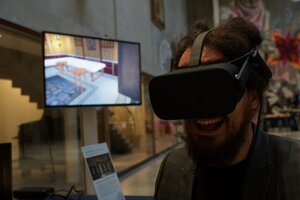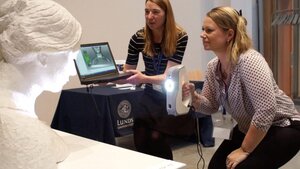Virtual Reality
Virtual reality (VR) is a technique to visualize and interact with 3D data and simulated or 3D scanned environments. VR has become synonymous with using so called head-mounted displays, i.e. stereoscopic headsets that are tracked in 3D space. The lab provides access to both tethered (connected to PC) and standalone (with built-in computer) headsets, and support for several research-related applications. Examples include: exploring and sharing 3D visualizations, stimulus presentation, 3D and 2D eye-tracking, logging motion data and integration with external motion capture system.
3D scanning and 3D modelling
3D scanning and modelling is much used by archaeologists either for documentation or reconstruction of historical artefacts and environments - from the size of tiny tools and fragments of bones to houses and landscapes and may include GPS positioning. But also used by biologists and architects. VR is often used to explore, measure and share the result as well as 3D-print. The latter is not facilitated by the lab. This makes it a relevant tool not only for research, but also for museum exhibition and similar.
Contact: vrhumlab.luse


